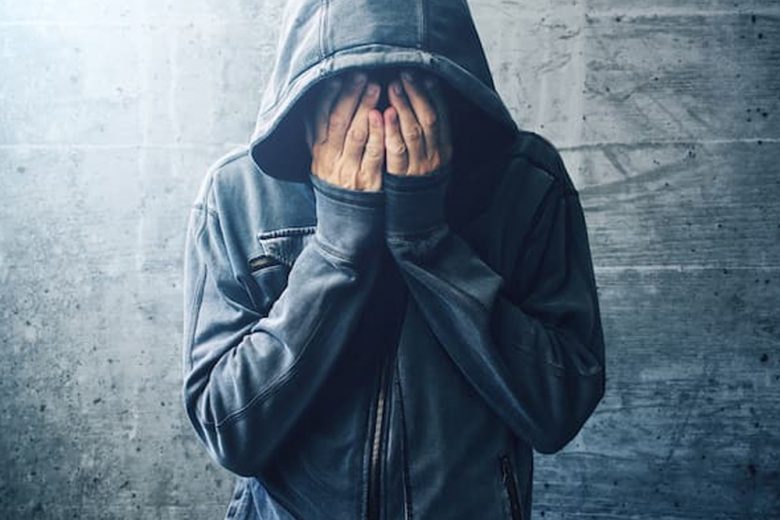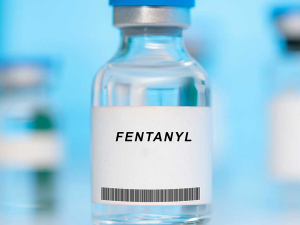Opioids or opiates are drugs typically used for treating pain. However, if you reduce intake or stop taking these drugs after using them for an extended period, it can result in various symptoms usually referred to as withdrawal. Opioids can result in physical dependence with prolonged use such that the person starts depending on the drug to keep withdrawal symptoms at bay. Eventually, they will need more of the drug to experience the same effects and this is referred to as tolerance. When you stop taking the medication, your body will need some time to recuperate, leading to withdrawal symptoms within the last 12 to 30 hours of the last dose.
Effects of Opioids on The Brain
 When a user takes an opioid, they will experience various effects such as slowed breathing, relaxation, and drowsiness. Most people will also feel a euphoric rush of pleasure which they will find very gratifying.
When a user takes an opioid, they will experience various effects such as slowed breathing, relaxation, and drowsiness. Most people will also feel a euphoric rush of pleasure which they will find very gratifying.
Opioid drugs work by binding to the brain’s opioid receptors producing feelings of pleasure and relief. This is because of increased dopamine release which happens when opioids trigger the reward circuits found in the brain. The continuous release of dopamine in the brain produces pleasure which leads to recurrent drug use. Dopamine is responsible for reinforcing pleasurable activities like spending time with loved ones, conducting fun hobbies, and exercising. So when dopamine is released in the brain following opioid use, this tells the brain to keep doing the same thing. This is why opioids are so addictive.
Causes of Opioid Withdrawal
 When opioids are prescribed by a doctor, they can safely help to reduce any intense physical pain such as surgery-associated pain. On the other hand, taking opioids for extended periods can lead to dependence and tolerance. When a user builds opioid tolerance, they will need more of the drug to experience the same sensations they did before, eventually leading to physical dependence.
When opioids are prescribed by a doctor, they can safely help to reduce any intense physical pain such as surgery-associated pain. On the other hand, taking opioids for extended periods can lead to dependence and tolerance. When a user builds opioid tolerance, they will need more of the drug to experience the same sensations they did before, eventually leading to physical dependence.
Opioid withdrawal can be potentially dangerous and painful. The timeline for opioid withdrawal will vary in each person but it depends on which opioid they use and their general health. As soon as you miss your next dose, you can start experiencing symptoms. Dependence on opioid drugs can bring about physical symptoms including muscle pain and nausea as well as psychological symptoms like mood changes and anxiety.
Long-acting opioids like methadone take longer to be eliminated from the body, so one may experience withdrawal a bit later compared to other opioids. This can last for up to 7 to 14 days. Short-acting opiates such as oxycodone or heroin may bring about withdrawal within 12 hours of the last dose lasting for 3 to 5 days.
The timeline for opioid withdrawal follows several phases as laid out below.
Early Stage Withdrawal
This stage happens when the user stops taking opioids and starts experiencing cravings for the drug shortly afterward around the timing of their next usual dose. The opioid drug’s half-life can help the user determine when the cravings will start. A drug’s half-life is the duration it takes for half its dose to be eliminated from the body. Opioids typically have a half-life of a few hours. Methadone’s half-life is 8 to 60 hours while oxycodone is 3 to 5 hours.
Over the next few hours after the last dose, the cravings for the drug will become stronger and stronger. The user may experience symptoms such as:
- Becoming preoccupied with the drug
- Being frustrated
- Having a strong urge to take more of the drug to feel normal
- Feeling anxious
All this may be coupled with other physical symptoms that might worsen over time. The user might still be able to deal with their withdrawal symptoms at this stage with support, distraction, and alternative means of pleasure. Nevertheless, some users might still need treatment during this phase.
Peak Withdrawal Stage
During this phase, the user’s opioid withdrawal will start to worsen as the drugs are eliminated from their body. The symptoms usually intensify about 1 to 2 days after the last use with most drugs. On the other hand, long-acting opioids and extended-release drugs can have a much later peak stage approximately 30 to 72 hours after the user’s last dose. During this stage, the individual might feel very sick and experience symptoms such as:
 Flu-like symptoms
Flu-like symptoms- Sweating
- Feeling hot or cold
- Having trouble sleeping
- A raised blood pressure
- Increased heart rate
- Constipation, vomiting, and diarrhea
- A strong urge for the drug
- Powerful cravings for the drug
- Feeling hopeless, depressed, and experiencing mood changes
- A strong feeling that one needs the drug
This is the strongest withdrawal phase during which the user is at the highest risk of relapsing. The individual might not be able to think of anything else or distract themselves. They may be too sick to even get out of bed. It is advisable to use medication at this point to treat these withdrawal symptoms and make things more comfortable for the patient. Methadone treatment is often used to eliminate or reduce withdrawal symptoms.
Late Withdrawal Stage
The symptoms eventually reduce for most people within one week of taking the last dose of the drug. Physical withdrawal symptoms may go away in less than a week while the psychological cravings will also start to reduce in intensity.
Nevertheless, addiction is still a continuous medical condition and the user may continue to experience withdrawal symptoms without treatment even years after ceasing drug use. This can increase the likelihood of relapse.
The user should get continuous support to deal with any factors that originally led them to start using opioids. These factors may include trauma, anxiety, depression, and chronic pain.
Opioid withdrawal symptoms are usually very uncomfortable and challenging to handle without medically supervised detoxification. Such a program can help users comfortably and safely get through opioid withdrawal as the first step towards recovery from dependence or addiction.



